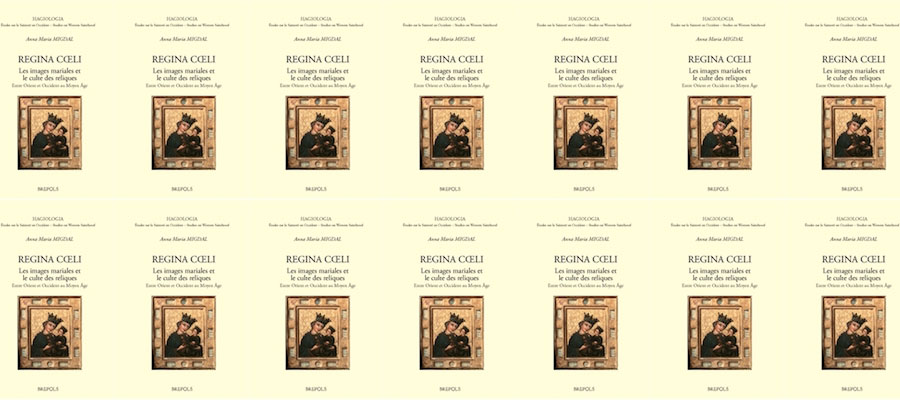Anna Maria Migdal. Regina Cœli. Les images mariales et le culte des reliques. Entre Orient et Occident au Moyen Âge. Brepols, 2017.
From Brepols
Scholarly investigation of devotional images from the medieval period has never explored, in a European context, the question of Marian paintings functioning as portable relics. The model of the « picture-reliquary » : a single, diptych, or triptych panel comprising the portrait of the Virgin and Child painted on wood (or, more rarely, on gilded glass, verreéglomisé) set in a large framework encrusted with relics (occasionally with precious stones) was particularly widespread in the territory of Little Poland from c. 1420. Polish reliquaries, known until the beginning of the sixteenth century, should be considered as an adaptation of iconic types and forms of Byzantine provenance, which were reinterpreted in the painting of the Italian Trecento. Of particular note is the Siennese model of the portable Marian altar piece made popular from the 1330s-40s. From the comparative study of the works, concerning their similarities and their antiquity, one envisages the advent of such a formal concept in Poland either directly from Italy, or by the intermediary of Bohemia.
The diffusion of picture-reliquaries, typical of Tuscan art, forms part of the general movement toward a renewal of piety in central Europe in the fifteenth century, the devotio moderna. As a result, alongside singular representations, especially venerated in the course of liturgical or paraliturgical offices, one sees less costly reliquaries spread in private space. Appreciated in the intimate setting of convents – Franciscan and Dominican – as well as that of the daily life of the laity, these relics were used as domestic altars or as folding altars for travel. These images of religious affection constitute an artistic phenomenon of the late Middle Ages. And, several similar reliquaries known later do not guarantee a veritable continuity of the ancient model to the modern era.
